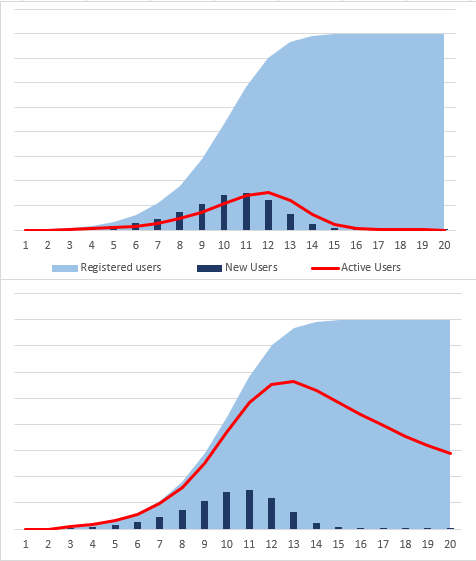- ARPDAUPosted 12 years ago
- What’s an impressive conversion rate? And other stats updatesPosted 12 years ago
- Your quick guide to metricsPosted 12 years ago
Five tips on gamifying your website, before you even begin
This week’s guest post is from Roy Schmidt at Bigdoor, the company that allows anyone to gamify their website. He reckons that before you leap into gamification, you should read these five tips.
And I agree.
There’s a lot of buzz around “gamification” recently, and plenty of confusion about what it really means to gamify a site. One thing is clear: It’s a lot more than just adding badges to a site. It’s about finding the right motivators for your audience and promoting desirable behaviour in an enjoyable way without getting in the way of the core value of your service.
So as you start thinking about how to gamify your service, be sure to take a moment to think through the goals of the project rather than just jumping in to a solution that may not be appropriate for you.
Here are some things we encourage you to think about when starting a project:
1. Get some feedback on your ideas
It’s easy to forget to put yourself in the shoes of your users and review your service from their point of view. When it comes to a gamification project, it becomes even more important, especially when you are adding a game layer to an existing service with an established user base. Think about what that transition will be like and plan on addressing questions and negative responses. Try to get direct feedback from your most valuable users and friends who aren’t afraid to tell you the truth. If appropriate, try to create parallel mechanics that motivate different types of users (some of your users may be motivated by social rewards while others are self-driven by accomplishment only – see Bartle for more).
2. Focus on the key actions
Don’t try to boil the ocean right away. You can’t create a full World of Warcraft universe around your foodie blog, and your users would hate suddenly being forced into a complex metagame that has nothing to do with restaurant reviews. Identify the key actions you hope to see from your users and find a way to encourage that limited set of actions. If you can’t improve results on a few user engagement goals, you will fail miserably trying to implement a huge game layer with tons of complexity. And if you really aren’t sure, just try with one action. It’s a nice baby step to see how users respond and whether or not you are providing the right experience to promote that key behavior.
3. Take the time for context
Throwing up predefined solutions is a good way to test and iterate, but as you start to see results, you may realize the potential for a custom fit to drive even better returns. If users are presented with a basic badge system, the novelty may work initially but long term success requires a smooth integration authentic to the core experience. If I’m visiting your blog about gardening and you reward me with just basic points and random trophies, I’ll eventually get annoyed. But if my site participation results in a virtual plant or garden that I can nurture, and my ongoing efforts result in rewards that enhance my experience and promote my blossoming expertise, I’m more likely to find a better value in your service.
4. Commit to the game layer like a new product offering
If you think you add some game mechanics to your experience and walk away, then you aren’t really thinking about your users. It’s kind of like expecting users to keep coming back to your news website without updating the homepage content. The users will realize that the game layer is stale at some point unless you are proactive about monitoring how it impacts your key user actions and make extensions and enhancements to continue to evolve it for the most involved users. You’re building on the relationship, so be ready to learn from the analytics and adjust and optimize as needed. Be active in support of the tool or it will just become a gimmick.
5. Don’t jump immediately into redeemable currencies
If you want to keep things simple and grow as you learn, don’t start with a redeemable currency with a promise of vast virtual rewards in exchange. Figuring out the right prices and items takes a lot of planning, so it’s better to focus on activity and experience points. You can always add the idea of virtual redemption later as you see what it most useful to your users. But if you try to start that way with no clear idea of where it will lead, the whole experience may confuse users and actually might de-motivate their participation.
Hopefully this short list will give you some things to consider before you get too far into your gamification effort. Of course there are situations when you should jump into a huge integration where the game layer becomes a core part of the service offering. But we’ve found that for most, dipping your toes in before diving in headfirst is an effective way to gamify your experience.
Contact BigDoor if you need any advice or a partner for your gamification project.













